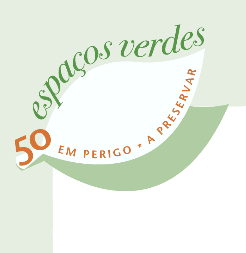Dentro do género Documental, uma familia muito particular de documentarios designados por "non-verbal" . O pioneiro Baraka destaca-se porém este post é dedicado a dois espantosos exemplos que recentemente vi:
.
Anima Mundi
e
Ata Whenua
.
.
.
Anima Mundi is a film about animals. It contains no actors, has not plot and has no script. Anima Mundi was created by Godfrey Reggio who also created Koyaanisqatsi.
Anima Mundi was commissioned by the Italian jewellery company Bvlgari, for the World Wide Fund for Nature which used the film for its Biological Diversity Program. The breathtaking images of nature where intended to make the viewer feel that they where part of the natural world. Philip Glass provided the musical score in Anima Mundi, as with all of Godfrey Reggio's films.
The concept of the term Anima Mundi is that the order and beauty of nature are made of the almost endless species and varieties of animals, elements and beings that make a balanced whole. All of the shots in Anima Mundi relate to this though, rather than just being images of animals that one might find in a BBC documentary.
The footage in Anima Mundi is made up of existing and newly shot footage. Only the finest existing footage was considered for the film. The score provides a good accompaniment to the animal scenes. Philip Glass often provides an unusual score, as is the case with Anima Mundi. However the sounds and rhythms complement the film well.
.
Anima Mundi was commissioned by the Italian jewellery company Bvlgari, for the World Wide Fund for Nature which used the film for its Biological Diversity Program. The breathtaking images of nature where intended to make the viewer feel that they where part of the natural world. Philip Glass provided the musical score in Anima Mundi, as with all of Godfrey Reggio's films.
The concept of the term Anima Mundi is that the order and beauty of nature are made of the almost endless species and varieties of animals, elements and beings that make a balanced whole. All of the shots in Anima Mundi relate to this though, rather than just being images of animals that one might find in a BBC documentary.
The footage in Anima Mundi is made up of existing and newly shot footage. Only the finest existing footage was considered for the film. The score provides a good accompaniment to the animal scenes. Philip Glass often provides an unusual score, as is the case with Anima Mundi. However the sounds and rhythms complement the film well.
.
..
Credits
Directed by Godfrey Reggio
Directed by Godfrey Reggio
Edited by Miroslav Janek
Produced by Lawrence Taub, Institute for Regional Education, USA.
Music Composed by Philip Glass
Also know as 'The Soul of the World'28 minutes
.
.
.
 Ata Whenua- Shadowlands is a nonverbal film featuring the landscapes of New Zealand. Shot in the south west corner of New Zealand, known as Fiordland. Ata Whenua contains images of the landscapes and animals of the region, through a range of seasons and extremes. The images are beautiful, crystal clear, and set to an impressive soundtrack.
Ata Whenua- Shadowlands is a nonverbal film featuring the landscapes of New Zealand. Shot in the south west corner of New Zealand, known as Fiordland. Ata Whenua contains images of the landscapes and animals of the region, through a range of seasons and extremes. The images are beautiful, crystal clear, and set to an impressive soundtrack.Ata Whenua was created to bring to viewers a rare glimpse of the wilderness of the Fiordland National Park. Few people get to see this beautiful but remote national park. The film takes you on a journey, showing you sights you would never normally see.
The images from Ata Whenua are stunning. The moody dawn shots of misty fiords, shot from a helicopter as it glides along show a region of the world few have seen or will visit. Many scenes are shot above the cloud base, giving a lovely effect that can be seen in other films on this website. The use of natural light in Ata Whenua is out standing. The glow of the dawn sun reflecting on the show covered mountains is just amazing.
There are several time-lapse scenes, with the clouds whisping over and around the mountainsides. The film has clearly taken time to shoot. As well as the snow covered landscapes, the sun glistens off the summer still lakes and rivers. At ground level, amongst the forests, we see a world of green vegetation, untouched my human hand. The animals of Fiordland are shown close-up and from a distance. We also see rock climbers tackling the sheer sides of the regions mountains.
The Name, Ata Whenua, is a Maori term, used to describe the tortuous terrain of the Fiordland region
.
http://www.doc.govt.nz/parks-and-recreation/national-parks/fiordland/
http://en.wikipedia.org/wiki/Fiordland_National_Park
http://en.wikipedia.org/wiki/Fiordland_National_Park
.
.
Credits
Execute Producer - Kim Hollows
Execute Producer - Kim Hollows
Director - Dave Comer
Producer - Peta Carey
Original Music & Sound Design - Murray Burns
Directors of Photography Mike Single & Alun Bollinger
HD Cinegyro Operator/Technician - Peter Thompson
32 minutes
Shot on 35mm and HD digital formatShot over 12 months








-3.jpg)


















0 comentários:
Enviar um comentário